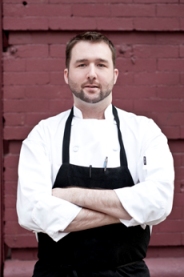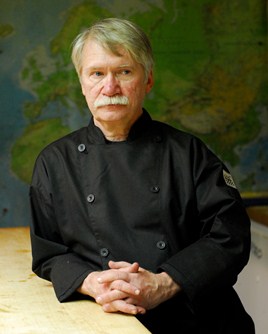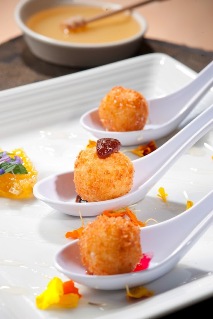New England Culinary Institute Alumnus Named a “Best New Pastry Chef 2012” by Food & Wine Magazine
 New England Culinary Institute alumnus Shawn Gawle has been named as a “Best New Pastry Chef 2012” by Food & Wine magazine.
New England Culinary Institute alumnus Shawn Gawle has been named as a “Best New Pastry Chef 2012” by Food & Wine magazine.
Gawle graduated NECI in 1999 with an AOS degree in Culinary Arts. “For Shawn to have created such an impressive niche in the baking and pastry world with a culinary-arts background demonstrates how imagination, creativity and fearlessness—coupled with knowledge of ‘the basics’—can create unlimited possibilities,” says Fran Voigt, NECI founder and CEO. “Shawn will no doubt have many more culinary successes in what will surely be a long and illustrious career.”
Food & Wine attributed Gawle’s success to his combining “modernist and classic techniques to create thoughtful, elegant, French-inflected desserts that often highlight Asian ingredients, like yuzu and cardamom.”
Formally trained as a savory cook, Gawle has spent years working in some of America’s most highly regarded kitchens with world-renowned chefs from Chicago to Philadelphia and New York City. His mastery of classic French technique has freed him to channel his creativity and push boundaries with his desserts. Gawle has been serving as pastry chef at New York’s first-class restaurant, Corton, since 2010. This most recent award from Food & Wine is the latest of his many accolades.

 Chef Gary Lyons of the Fox Valley Technical College’s (FVTC) Chefs Gone Grillin’ culinary competition team took home first prize in the dessert competition at the 8th annual UP Hog Wild BBQ Competition held July 21 and 22 in Kingsford, Mich. The winning dessert was Jones Cherrywood Smoked Bacon & Maple Cheesecake.
Chef Gary Lyons of the Fox Valley Technical College’s (FVTC) Chefs Gone Grillin’ culinary competition team took home first prize in the dessert competition at the 8th annual UP Hog Wild BBQ Competition held July 21 and 22 in Kingsford, Mich. The winning dessert was Jones Cherrywood Smoked Bacon & Maple Cheesecake. Says this career educator, whether students in your program have a practice restaurant or not, teaching respect for the staff meal and how it contributes to a sense of team will follow your graduates to the kitchens that they work in and eventually run.
Says this career educator, whether students in your program have a practice restaurant or not, teaching respect for the staff meal and how it contributes to a sense of team will follow your graduates to the kitchens that they work in and eventually run. Five ways to incorporate nutritious dry peas, lentils and chickpeas into the most important meal of the day.
Five ways to incorporate nutritious dry peas, lentils and chickpeas into the most important meal of the day. National Honey Board awards $8,000 in Culinary Institute of America scholarships to culminate Sweet 16 Honey Recipe Challenge
National Honey Board awards $8,000 in Culinary Institute of America scholarships to culminate Sweet 16 Honey Recipe Challenge The taco renaissance taking the nation by storm is spurred partly by innovative chefs. But Americans seem to have recently realized that just about anything tastes better and is more fun to eat when it’s nestled in a folded tortilla.
The taco renaissance taking the nation by storm is spurred partly by innovative chefs. But Americans seem to have recently realized that just about anything tastes better and is more fun to eat when it’s nestled in a folded tortilla. A Washburne Culinary Institute instructor wins second prize, and students from Wisconsin and Indiana cook their way to cash awards in the 2012 Discover Duck Chef Recipe Contest.
A Washburne Culinary Institute instructor wins second prize, and students from Wisconsin and Indiana cook their way to cash awards in the 2012 Discover Duck Chef Recipe Contest. Shane Schaibly doesn’t feel his fondue-specific menu is limiting. So how does the 30-year-old corporate chef of a 140-unit franchise exercise his creativity?
Shane Schaibly doesn’t feel his fondue-specific menu is limiting. So how does the 30-year-old corporate chef of a 140-unit franchise exercise his creativity?